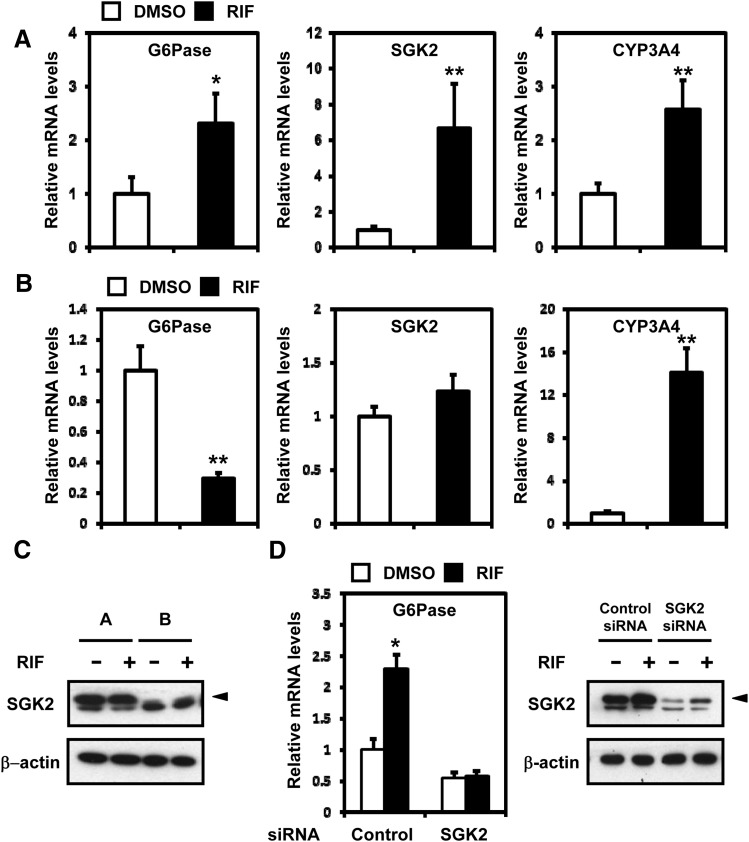Fig. 5.
G6Pase regulation by SGK2 in human primary hepatocytes. (A) Human primary hepatocytes (age, 72 years; female; body mass index, 40; smoking; no alcohol use) were treated with rifampicin (RIF, 100 μM) or DMSO (control) for 6 hours (n = 3). The relative expression of G6Pase, SGK2, and CYP3A4 mRNAs was measured by qRT-PCR and was normalized to endogenous glyceraldehyde-3-phosphate dehydrogenase using the comparative cycle threshold method. Values are scored as fold-change relative to DMSO-treated hepatocytes. (B) Human primary hepatocytes (age, 61 years; male; body mass index, 33; no smoking; alcohol use) were treated with rifampicin (RIF, 10 μM) or DMSO (control) for 48 hours (n = 4). The relative expression of G6Pase, SGK2, and CYP3A4 mRNAs was measured by qRT-PCR and was normalized to endogenous glyceraldehyde-3-phosphate dehydrogenase using the comparative cycle threshold method. Values are scored as a fold-change relative to DMSO-treated hepatocytes. (C) Western blots were performed on whole extracts prepared from these same cells using an anti-SGK2 or an anti–β-actin antibody. (D) Human primary hepatocytes [same as (A)] were transfected with SGK2 siRNA or control siRNA, followed by treatment with rifampicin (RIF, 100 μM) or DMSO (control) for 6 hours (n = 4). The relative expression of G6Pase mRNA was measured by qRT-PCR and was normalized to endogenous glyceraldehyde-3-phosphate dehydrogenase using the comparative cycle threshold method. Values are scored as a fold-change relative to DMSO control siRNA. The knockdown efficiencies of SGK2 were confirmed by Western blots using an anti-SGK2 antibody. Statistical analysis was done by one-way ANOVA; *P < 0.05; **P < 0.01.

